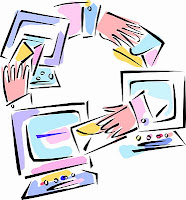Top tips from Mesmo Consultancy (and Associates) on how to save time and improve business and personal performance by ‘Taking Control of your Inbox’ and using proper business email etiquette.

Email overload often seduces us into replying in haste and then trying to delete the said email from ours and the recipients inbox.
Whether an email is deleted – inadvertently or intentionally – the good (or perhaps bad) news is that it can almost always be recovered.
For example, you’ll know that if you delete an email in Outlook, it will go into the Deleted Items folder, but even deleting an item from this folder does not actually delete it. You can still recover it (albeit within a more limited time-frame) using the Outlook Recover Deleted Items option.
The deletion of items held in this service (termed the Dumpster) is managed as a central function. For example, a permanent deletion may be configured to take effect after say 28 days or longer, giving you a window for retrieval.
But, the fact is, even if an email is permanently deleted from Exchange it will still exist in many different places, including:
Just like your Facebook profile, once an email has been sent, it is forever somewhere in the ether.
Some IT teams might choose not to expend effort in retrieving an email confirming your extra day’s holiday for you. However you can bet that a LOT of effort will be spent on recovering email that shouldn’t have been sent in the first place.
For more information about how we can help you see our website at www.essential.co.uk
Keith Quinn, CEO, Essential Computing.
Tags: email archiving, email best practice
Email Overload is a major contributor to information overload. Today is the annual Information Overload Day. This event was initiated by Basex who have just posted some data on the staggering cost of information overload. Did you know that for every hundred people who are unnecessarily copied into emails we lose eight hours?
We are swamped by information from RSS feed, daily newsletters and social networking updates (many of which come by email) and everyday emails from colleagues and friends. Just as we like to think we can multi-task and still be productive, we think we can handle all this Email Overload.
When I meet people at networking events and give my elevator pitch about what I do, the instant reaction is often, ‘I simply delete all the unwanted emails’. But that in itself just adds to the time and energy wasted because you still have to use precious time and brain power to scan the list of incoming emails to know what to delete. That is an appalling yet avoidable waste of time. Deleting 20 emails a day which you really did not need wastes up to 30 minutes a day. Who can afford such indiscriminate waste in the current economic climate?
Information and email overload carries significant health warning to us as individuals through distorted work-life balance and our business as key emails are missed in the morass of unwanted ones.
To check what email overload is costing you use our ‘Cost of Email Overload’ Calculator.
Based on the premise that your inbox is your work in progress (action tray), here is my three point plan to reduce information overload by being far more selective about what emails drop into your inbox.
1) Prioritise each email which arrives over the next few days. Triage them according to the usefulness to use:
2) For all ‘nice to know’ emails – set up rules to move them automatically to folders for reading (action) later.
3) For all ‘no use’ emails – remove yourself from the senders distribution list. If they come from a specific friend/colleague tell them what you are doing. Enlist them in the campaign against information overload by taking you off their circulation list!
This will help you save time and reduce the level of information overload you endure and hence enable you to be more productive.
To further fight the information overload battle try our Nine Ps of Smart Email.
Email overload is often casued by email addiction. During the recent BlackBerry outage reports flooded in of staff that were stressed and angry by the lack of email, and felt unable to work. These are the classic withdrawal symptoms of an addict.
Dear Blackberry users – isn’t it time to assess your email addiction? Email addiction is a major cause of email overload. Are you feeling stressed out by the lack of your instant quick fix of emails? Feeling you can no longer function properly and worse still do business (as some people are reporting). This is all nonsense.
This Blackberry outage should be a wake-up call for us all to reassess just how addicted we have become to email, because we can all survive without constant instant access to our email 24x7x365. We would probably be significantly more productive. We just like to think its macho and makes us look important to be attached by the Blackberry (or iphone) umbilical cord to our email.
The lack of constant interruptions from the Blackberry buzz could have many positive effects such as reigniting our strategic thinking and improving meetings as people stop multi-tasking. We could start to review some processes which have developed through our email addiction rather than as a result of thinking through what is best for the business.
To check just how addicted you and your business have become use our Email Addiction benchmarking tool. Click here to download it. For a ten point plan to cure it see January 31st – Email addiction ways to cure it and February 2nd – Email addiction – more tips and hints.
Whatever you do, just make sure you seize the moment to re-evaluate your life-work balance and how you can actually be more productive by freeing yourself from the the Blackberry umbilical cord.
Tags: email addiction, email overload
Email chains are a major cause of email overload. You know the symptoms:

Then there is the corollary – people who feel left out and feel they should be included. Take a look and see what percentage of the emails in your inbox relate to a thread/chain? How many of the iterations do you really need? Probably less then 25%. Little wonder email overload is on the increase.
Email chains seem to be the bane of most people’s life at the inbox. There are several ways to manage these more successfully which range from personal email management techniques to better use of the software. Here are the top three, some of which were in our October 2011 ‘ebriefing’ on tips to help you overcome email overload and use brilliant email etiquette to save time.
The key is to stop the email chain once it gets out of hand and re-assess just what you are trying to achieve and who really needs to make an input.
During the week there will be more tips on managing email chains.
Tags: email best practice, email chains, email overload